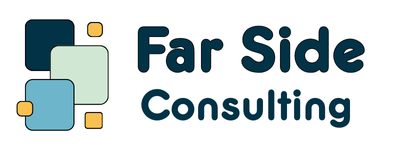When it comes to boosting your therapy practice's visibility online, understanding your target audience is key. You'll want to utilize keyword research tools to uncover long-tail keywords that align with the concerns of potential clients. But it doesn't stop there; creating engaging and relevant content is essential for establishing trust and authority. Have you considered how analyzing competitor keywords might reveal gaps in your own strategy? As you explore these elements, you'll discover the nuances that can set your practice apart in a competitive landscape. What's next in this evolving process?
Key Takeaways
- Identify and target long-tail keywords specific to therapy services to improve search visibility and attract clients with specific needs.
- Conduct competitor keyword analysis to uncover market positioning opportunities and refine your own keyword strategy effectively.
- Create relevant and engaging content that addresses common client questions, using clear language and relatable anecdotes to foster connection.
- Utilize local SEO strategies by incorporating geographical keywords to attract nearby clients seeking therapy services.
- Regularly update and optimize your website content with new keywords and trends to stay relevant and improve overall SEO performance.
Understanding Your Target Audience
To effectively connect with potential clients, you need to immerse yourself in understanding your target audience. Start by identifying who your ideal clients are—think about their age, gender, location, and specific challenges they face. Understanding these demographics helps you tailor your services to meet their needs.
Next, consider their emotional states and motivations. What drives them to seek therapy? Are they dealing with anxiety, depression, or relationship issues? Knowing their pain points allows you to craft marketing messages that resonate. You want to speak their language and show empathy in your content.
Don't overlook the importance of conducting surveys or interviews. Engage directly with your current clients to gather insights about their experiences and expectations. This feedback is invaluable; it can guide your content strategies, ensuring you address the questions and concerns they have.
Utilizing Keyword Research Tools
Understanding your target audience lays the groundwork for effective SEO, but the next step involves tapping into keyword research tools to amplify your reach.
These tools help you identify the terms and phrases your potential clients are using to find therapy services, ensuring your content aligns with their needs.
Here are a few key benefits of utilizing keyword research tools:
- Uncover Relevant Keywords: Find specific terms related to therapy that resonate with your audience, increasing your chances of being discovered.
- Analyze Competition: Understand what keywords your competitors are ranking for, allowing you to carve out your niche in the therapy space.
- Track Performance: Monitor keyword performance over time, helping you refine your strategy and stay ahead of trends.
Long-Tail Keywords for Therapy
While many therapists focus on broad keywords, tapping into long-tail keywords can greatly enhance your online visibility. Long-tail keywords are specific phrases that potential clients might use when searching for therapy services. For instance, instead of targeting "therapy," consider "affordable anxiety therapy for teens in [Your Location]." These phrases may have lower search volumes, but they often result in higher conversion rates since they cater to specific needs.
To effectively use long-tail keywords, start by identifying your niche and the common concerns of your target audience. Think about what clients might type into a search engine when looking for help. Incorporate these phrases naturally into your website content, blog posts, and service descriptions.
Additionally, don't shy away from localizing your keywords. Including your city or neighborhood can attract clients in your area who are searching for services nearby.
Regularly update your content with new long-tail keywords as trends evolve in the mental health field. This strategy not only improves your search rankings but also positions you as a knowledgeable resource, ultimately helping you connect with the clients who need your services the most.
Analyzing Competitor Keywords
Analyzing competitor keywords can provide invaluable insights into how to enhance your own SEO strategy. By understanding which keywords are driving traffic to your competitors, you can identify opportunities and gaps in your own approach.
This process not only helps you craft a targeted keyword list but also allows you to refine your content strategy to meet patient needs more effectively.
Here are a few steps to get started:
- Identify Competitors: Look for other therapy practices in your area or niche. Analyze their websites to see what keywords they rank for.
- Use SEO Tools: Leverage tools like SEMrush, Ahrefs, or Moz to gather data on competitor keywords. Look for search volume, keyword difficulty, and trends.
- Analyze Content: Review the content associated with those keywords. What topics are they covering? How are they engaging their audience?
Creating Relevant Content
Creating relevant content is essential for attracting and retaining clients in your therapy practice. By providing valuable information that addresses your clients' concerns, you position yourself as an authority in your field.
Start by identifying the common questions and issues your clients face—topics like anxiety management or coping strategies for depression can be great starting points.
Next, create blog posts, articles, or videos that offer practical advice. Use clear, straightforward language that resonates with your audience. Remember, your goal isn't just to inform but to engage and connect.
Incorporate personal anecdotes or case studies (while ensuring confidentiality) to make your content relatable.
Don't forget about SEO! Optimize your content by incorporating relevant keywords naturally. Think about what potential clients might search for and include those phrases throughout your writing.
Additionally, encourage interaction by inviting readers to comment or share their experiences. This not only builds community but can improve your site's SEO ranking.
Conclusion
So, there you have it! Mastering SEO for your therapy practice isn't rocket science—unless you count the emotional rollercoaster of trying to rank on Google! Remember, by understanding your audience, digging into keyword research, and crafting content that speaks to their woes (without the jargon), you'll attract those clients faster than they can say, "I need therapy!" Embrace these tips, and you'll be well on your way to becoming the go-to therapist in your area—no couch required!

